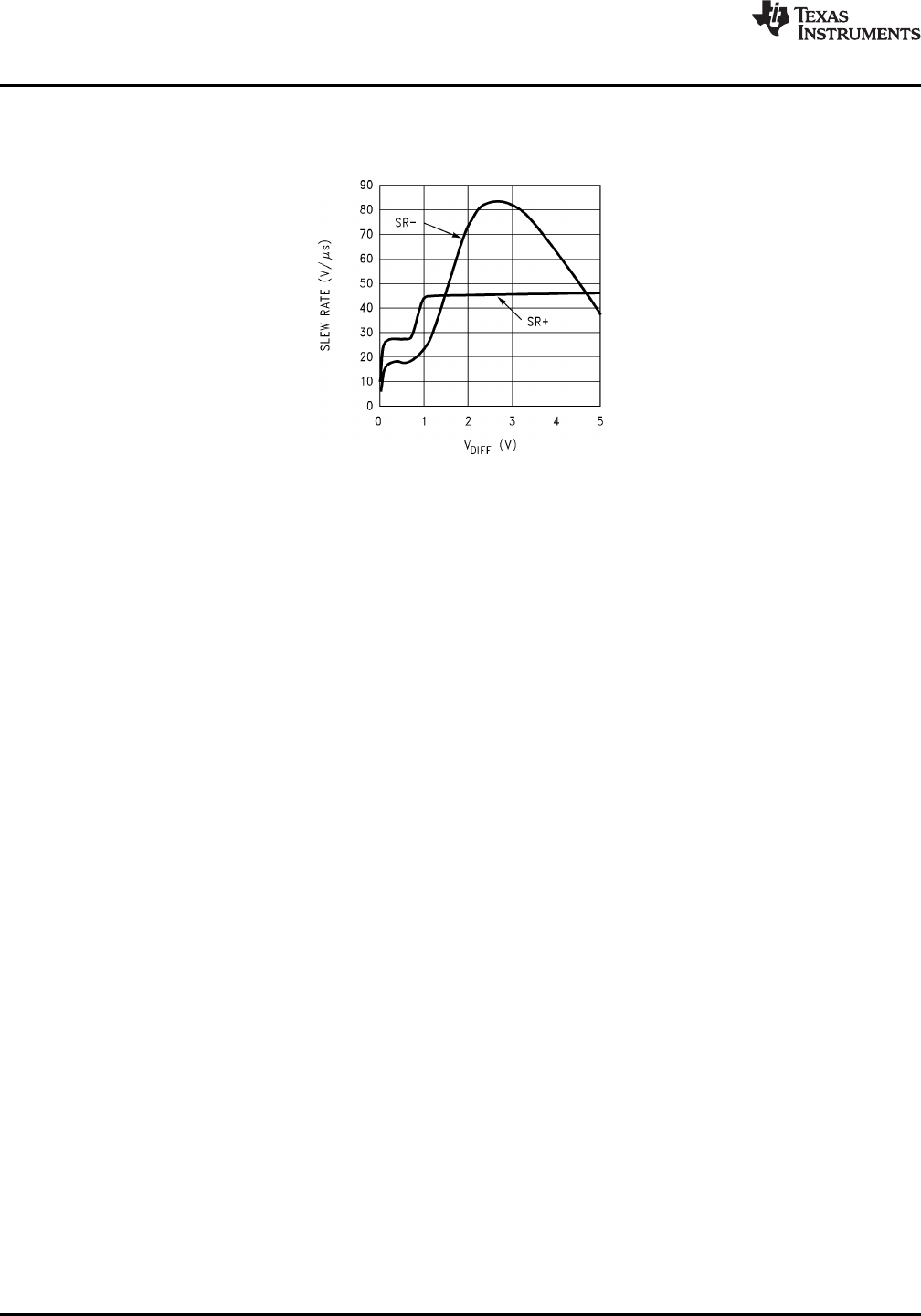Datasheet
Table Of Contents
- FEATURES
- Applications
- DESCRIPTION
- Absolute Maximum Ratings
- Operating Ratings
- 5.0V DC Electrical Characteristics
- 5.0V AC Electrical Characteristics
- 2.7V DC Electrical Characteristics
- 2.7V AC Electrical Characteristics
- 24V DC Electrical Characteristics
- 24V AC Electrical Characteristics
- Typical Performance Characteristics
- Application Information
- Revision History

LM6152, LM6154
SNOS752D –MAY 1999–REVISED MARCH 2013
www.ti.com
Unlike most bipolar op amps, the unique phase reversal prevention/speed-up circuit in the input stage, causes
the slew rate to be very much a function of the input pulse amplitude. This results in a 10 to 1 increase in slew
rate when the differential input signal increases. Large fast pulses will raise the slew-rate to more than 30 V/µs.
Figure 29. Slew Rate vs. V
DIFF
The speed-up action adds stability to the system when driving large capacitive loads.
A conventional op amp exhibits a fixed maximum slew-rate even though the differential input voltage rises due to
the lagging output voltage. In the LM6152/LM6154, increasing lag causes the differential input voltage to
increase but as it does, the increased slew-rate keeps the output following the input much better. This effectively
reduces phase lag. As a result, the LM6152/LM6154 can drive capacitive loads as large as 470 pF at gain of 2
and above, and not oscillate.
Capacitive loads decrease the phase margin of all op amps. This can lead to overshoot, ringing and oscillation.
This is caused by the output resistance of the amplifier and the load capacitance forming an R-C phase shift
network. The LM6152/6154 senses this phase shift and partly compensates for this effect.
12 Submit Documentation Feedback Copyright © 1999–2013, Texas Instruments Incorporated
Product Folder Links: LM6152 LM6154










